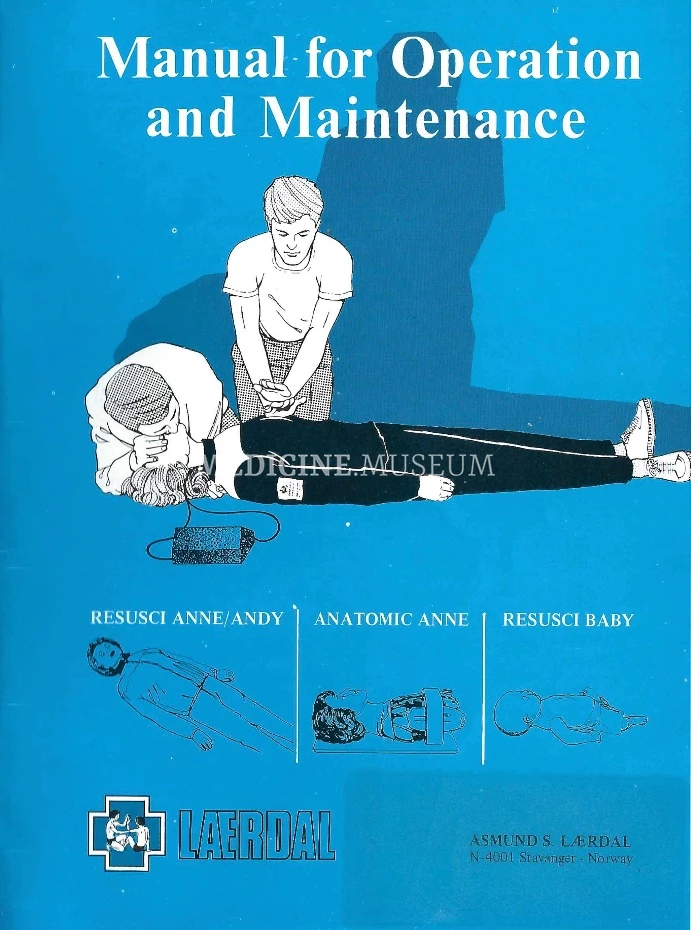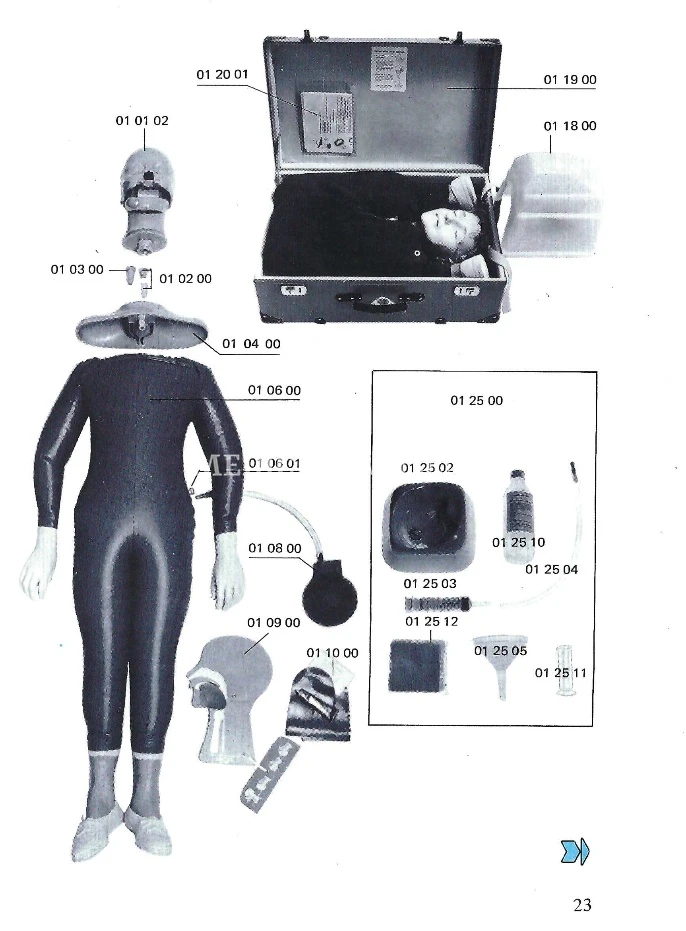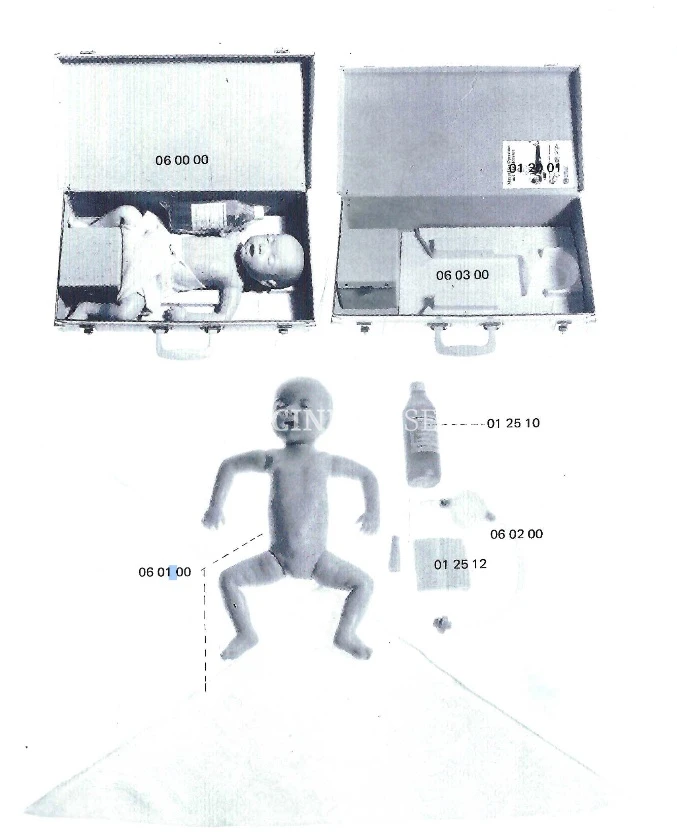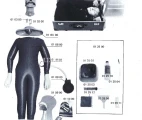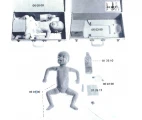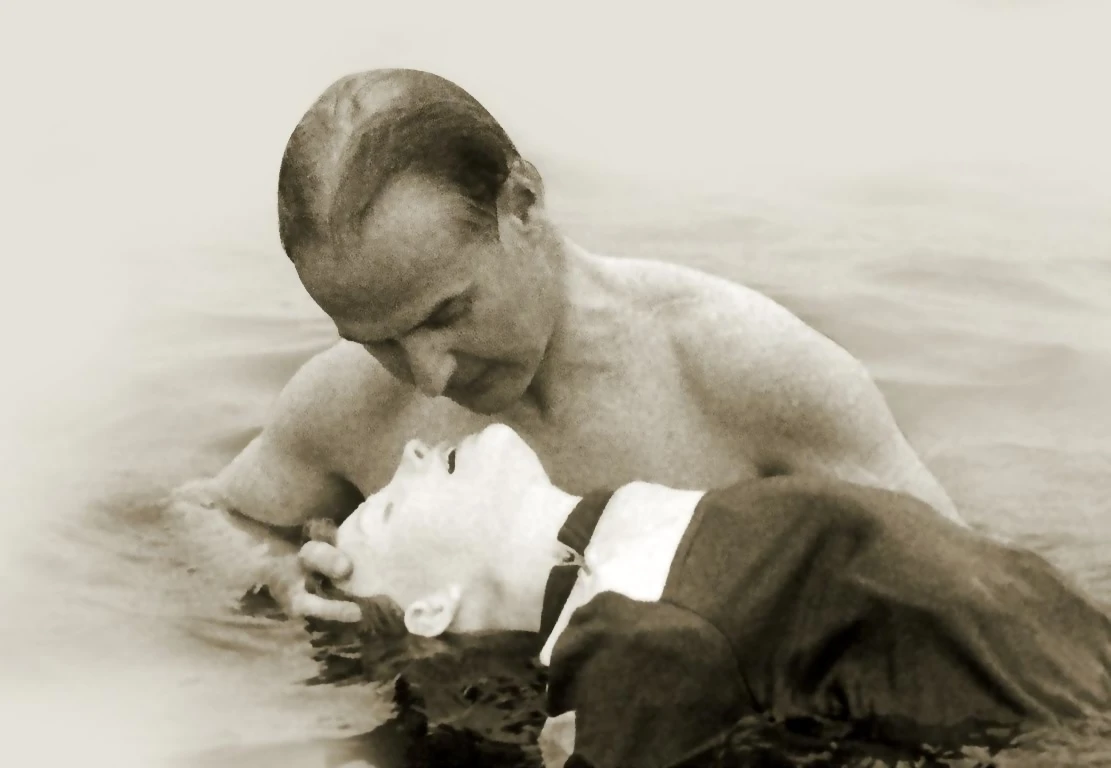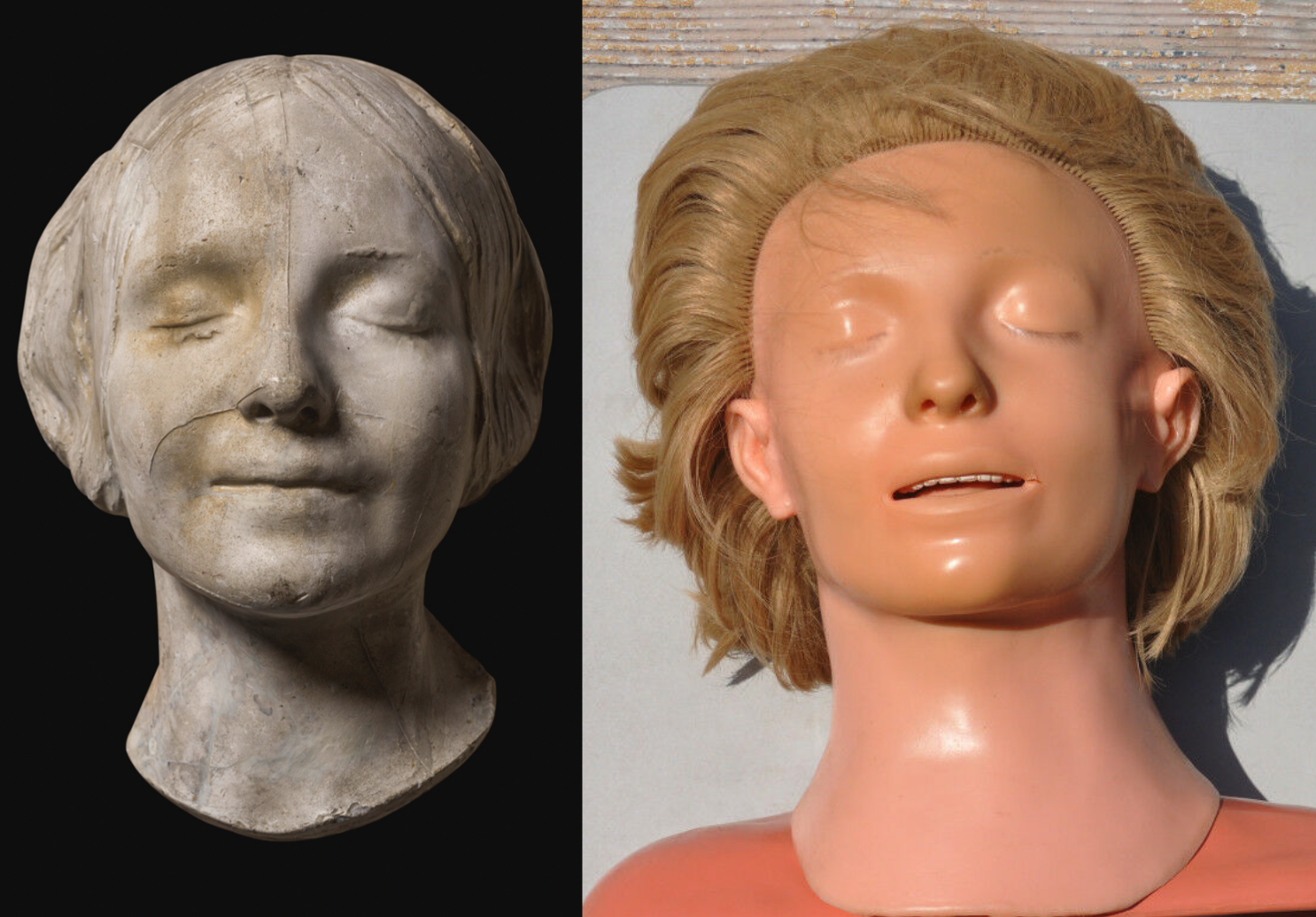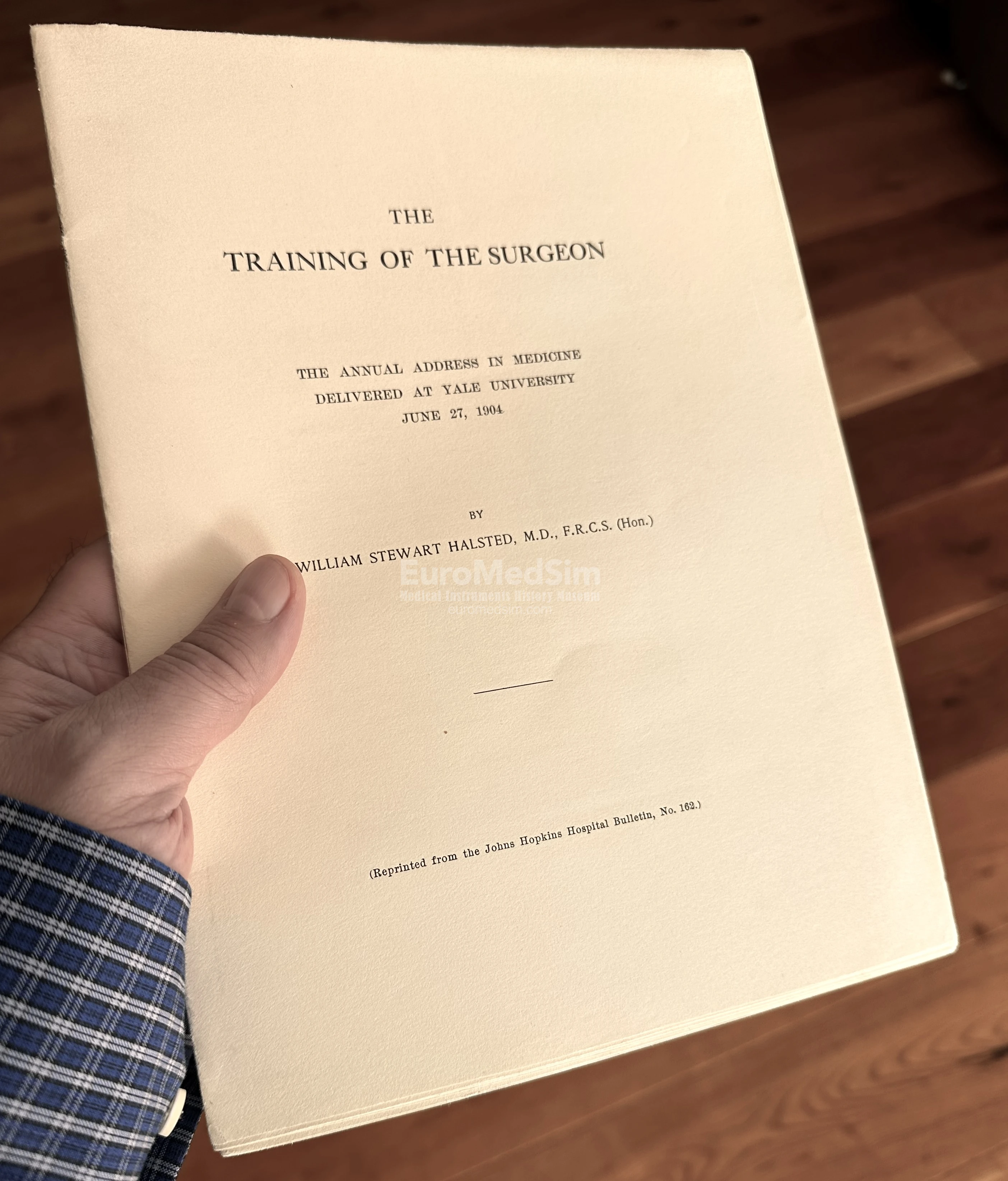Manual for Operation and Maintenance, Laerdal, Norway
Manual for Operation and Maintenance, Laerdal, Norway
Manual for Operation and Maintenance | Resusci Anne / Andy and Baby | Anatomic Anne | Resusci Baby. Stavanger : Laerdal, year not indicated, ca. 1970-1980. Format (200 x 148 mm).
Manual for Operation and Maintenance describes on 35 pages the usage, maintenance, trouble-shouting and spare-parts for the manikins Resusci Anne, Resusci Andy, Anatomic Anne and Resusci Baby made by the firm Laerdal, Stavanger, Norway. The manikins were desugned for the training of artificial respiration and chest compressions (cardiac-pulmonary resuscitation, CPR).
Resuscitation manikins, essay
The introduction of manikins, particularly Resusci Anne, revolutionized cardiac-pulmonary resuscitation (CPR) training and left a profound impact on medical education. Developed in the 1960s by Norwegian toymaker Asmund Laerdal (originally in Norwegian Åsmund Lærdal), Resusci Anne was the first realistic manikin designed specifically for teaching CPR. Her creation marked a pivotal moment in medical training, transitioning from purely theoretical instruction ("mouth-to-mouth" respiration was not possible to train on each other) to hands-on, practical learning experiences that have since become the cornerstone of modern medical education.
Resusci Anne’s lifelike appearance (a cast was inspired by famous mask of L'inconnue de la Seine) and functional features allowed trainees to practice critical lifesaving techniques in a controlled, safe environment – simulation. This innovation brought a new level of realism to medical training, enabling students to gain the muscle memory and confidence needed to perform CPR effectively in real-life situations. The ability to simulate chest compressions, ventilation, and other vital procedures on a manikin significantly improved the quality of training, making it possible to standardize CPR instruction worldwide.
The impact of Resusci Anne extended beyond CPR training. Her success highlighted the importance of simulation in medical education, paving the way for a broader adoption of manikins and other simulation technologies in various medical disciplines. Simulation-based training allows healthcare professionals to hone their skills, make mistakes, and learn in a risk-free environment, ultimately leading to better patient outcomes. Today, simulation is recognized as an essential component of medical education, and it all began with the humble introduction of Resusci Anne.
Full-text link
Full-text links will be provided
Condition report
Format (200 x 148 mm). The label "LAERDAL MEDICAL CORPORATION / 1 LABRIOLA COURT - ARMONK, N.Y, 10504" was initially attached to the lower right corner of the cover, over the originally printed "Åsmund S. Lærdal, N-4001 Stavanger - Norway" (the label is now loose). No marks or notes. Overall in good condition. Includes a small key, likely for the manikin carrying case.
Provenance
- Acquired from the shop of used electronic items in MN, USA in 2024
